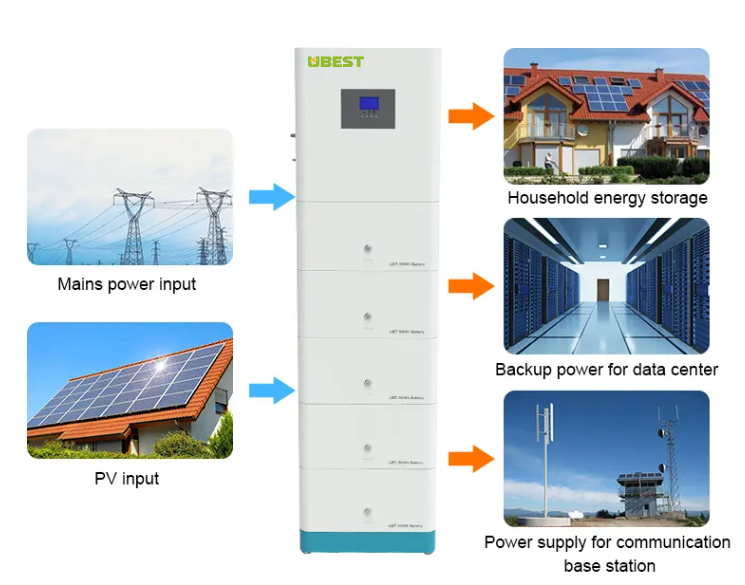Views: 342 Author: Ubest Publish Time: 2023-12-01 Origin: Site









The electrochemistry or battery technology used by BESSs varies. Let's take a look at the various BESS battery types and the possibilities they provide for battery storage solutions.
According to the US Energy Information Administration's (EIA) 2021 report, lithium-ion batteries powered more than 90% of large-scale battery energy storage systems in the United States. The current global statistics are nearly identical. This type of rechargeable battery is widely used in electric vehicles, consumer electronics, and portable electronic devices such as smartphones, laptops, tablets, and cameras. Lithium cobalt oxide, lithium manganese oxide, lithium iron phosphate, lithium nickel manganese cobalt oxide (NMC), and other chemistries are used in lithium-ion batteries. The benefits of a Li-ion battery make it one of the leading technologies for energy storage. The global lithium-ion battery market is expected to triple to $278 billion by 2030. It is light and compact, has a high capacity and energy density, requires little maintenance, and has a long lifespan. Furthermore, lithium-ion batteries charge quickly and have a low self-discharge rate. This battery technology's flaws include its high cost, flammability, intolerance to extreme temperatures, overcharge, and over-discharge. Related product: Energy Storage Systems.
A lead-acid battery is the oldest battery technology and also one of the most affordable and widely available solutions used in automotive, industrial, and power storage systems. PbA batteries are highly recyclable and work well in both high and low temperatures. Because of their longer lifetime, higher capacity, and ease of maintenance, valve-regulated lead-acid (VRLA) batteries are better suited for power storage solutions than their older counterparts flooded lead-acid batteries. This battery technology's major drawbacks include slow charging, heavyweight, and low energy density.
This battery type dominated the wearable electronics market until Li-ion batteries arrived. Ni-Cd batteries come in a variety of configurations, are inexpensive, simple to ship and store, and are highly resistant to low temperatures. In terms of energy density, self-discharge rate, and recycling, the technology lags behind its competitors. Ni-MH batteries rely on the same component as Ni-Cd batteries: nickel oxide hydroxide (NiO(OH)). However, Ni-MH battery chemistry has superior properties such as higher capacity and energy density.
A sodium-sulfur battery is a low-cost molten salt-based technology. The benefits of Na-S batteries include high energy and power density, a long lifetime, and stable operation in harsh environments. Nonetheless, due to high operating temperatures (no less than 300oC) and corrosion sensitivity, this battery technology has a limited application area. Furthermore, sodium is a dangerous component because it is highly flammable and explosive. Sodium-sulfur batteries are ideal for standalone energy storage applications in conjunction with renewable energy sources.
Flow batteries store energy in liquid electrolyte solutions, as opposed to conventional rechargeable batteries, which store energy in solid electrode material. The vanadium redox battery (VRB) is the most common type of flow battery. Other chemistries include zinc-bromine, zinc-iron, and iron-chromium. Despite their low energy capacity and low charge/discharge rate, flow batteries have several significant advantages that have allowed them to capture a large market share in on-grid and off-grid energy storage systems, including large-scale applications. These advantages include an extremely long lifespan (up to 30 years), high scalability, fast response time, and a low risk of fires due to the use of non-flammable electrolytes in flow batteries.
BESSs accounted for 7.5% of global energy storage capacity in 2020, far less than pumped-storage hydro. According to The Business Research Company, the global battery energy storage market is expected to reach $13.8 billion by 2027, growing at a 25.7% CAGR. Given its availability, efficiency, and recent advances in electrochemical storage technologies, a BESS is expected to be a leader in energy storage in the coming years. Alternative solutions, on the other hand, can compete with battery power storage systems, gaining the upper hand in some applications. The following are the main BESS competitors:
According to the International Hydropower Association (IHA), PSH systems store up to 9,000 GWh of electricity globally, accounting for more than 94% of global energy storage capacity. Water spinning turbines as they flow down from a higher tank to a lower reservoir generate energy in PSH. This ESS can provide large storage capacity at a low cost, meeting the needs of larger electricity networks. The most difficult challenge with pumped hydro storage systems is that they take years to build and require significant investments.
This type of ESS compresses and stores air in an underground reservoir using energy. When necessary, the released air generates electricity via rotating air turbines. CAES systems are widely used in the manufacturing and mining industries. However, implementing this technology in some applications, particularly residential solutions, can be difficult.
Applying energy to a flywheel greatly increases its speed, generating rotational or kinetic energy that is later stored and released. FES systems are known for their long lifespan (up to decades), ease of maintenance, and quick response time. However, they can only operate for a limited time.
This ESS type can store thermal energy from a variety of sources, including water, rocks, and molten materials such as salt, silicon, and aluminum. TES systems have the potential to be widely used in heating and cooling applications with renewable energy sources.
Mechanical gravity energy storage or potential energy storage. The concept behind this ESS is to raise heavyweights, such as concrete blocks, and lower them when energy is required to be released. The technology is still in its early stages, but it has the potential to be beneficial to the energy storage market once it is refined.
Alternative energy storage technologies have been available for several years. Some are already operational, while others are still in the works. All of them have one thing in common: they all require dependable machine learning and artificial intelligence solutions. These would automate operations, reduce maintenance costs, and ensure smooth operation with minimal human intervention.